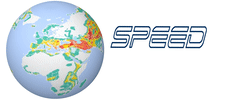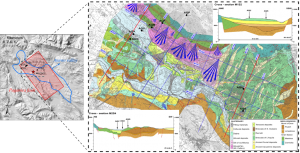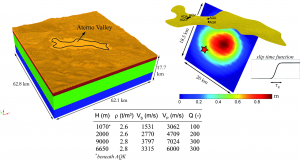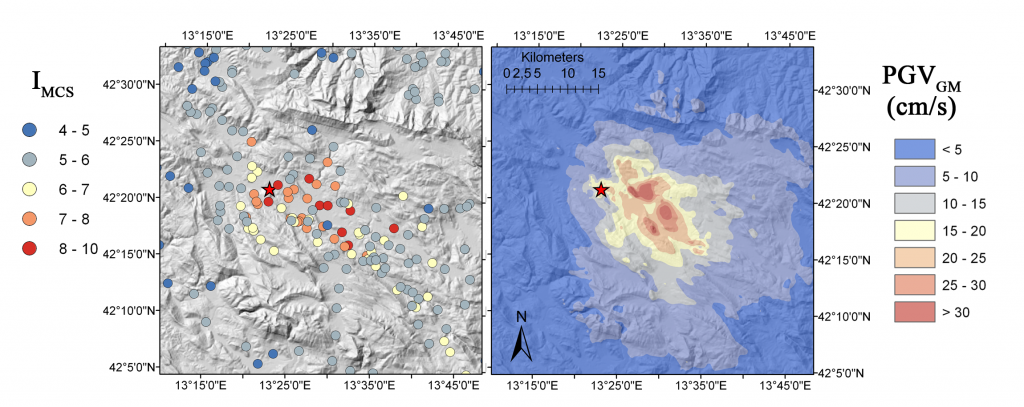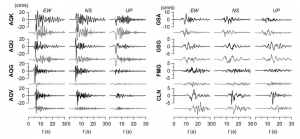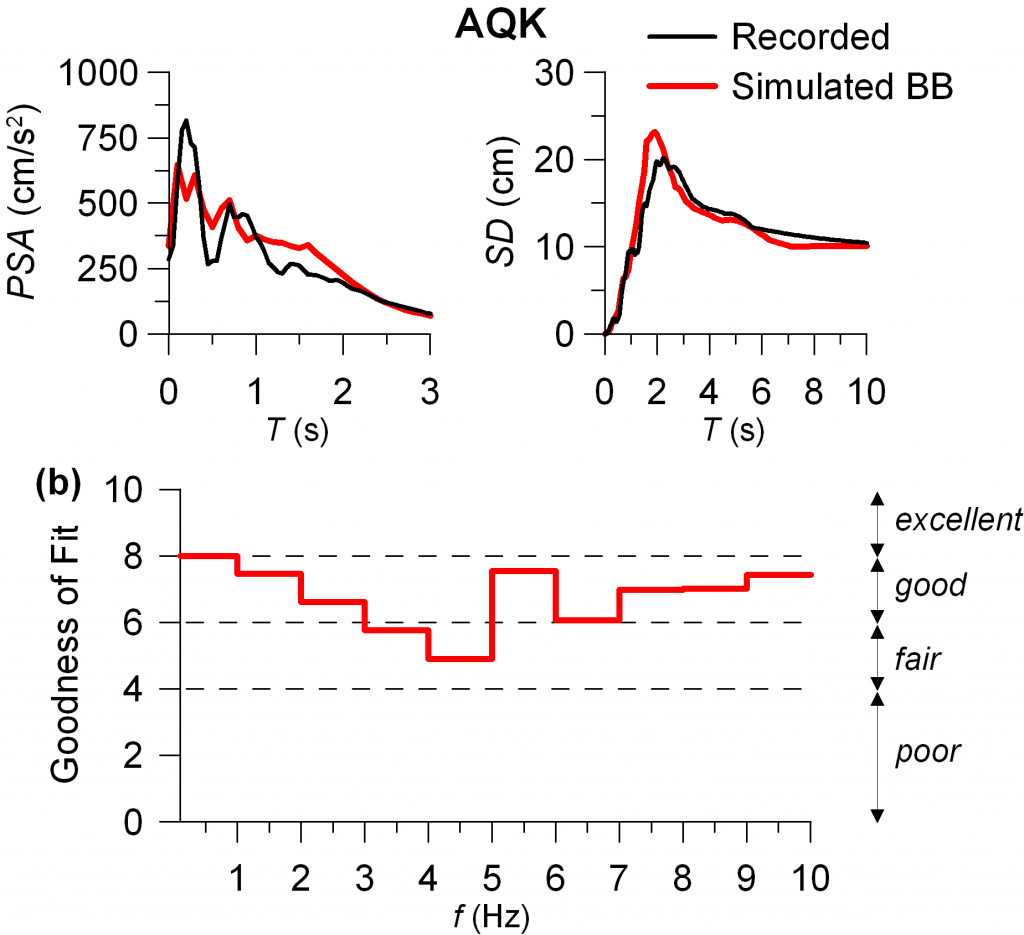Smerzini C. and M. Villani (2012), Broadband numerical simulations in complex near field geological configurations: the case of the Mw 6.3 2009 L’ Aquila earthquake, Bulletin of Seismological Society of America, December 2012, v. 102, p. 2436–2451.
Geological dataset
In the night of April 6 2009, at 01:32 UTC, a MW 6.3 earthquake struck the Abruzzi region, causing about 300 deaths and significant damage within the town of L’ Aquila, the medieval capital city of the region with about 80,000 inhabitants, and its surroundings, with maximum MCS intensities of IX-X (Galli and Camassi, 2009).
Numerical Model
The main features of the model, created to propagate frequencies up to about 2.5 Hz, are:
-
the inclusion of the 3D shape of the Aterno valley, based on the results of the seismic microzonation campaign carried out after the earthquake by the Italian Department of Civil Defence (MS-AQ Work Group, 2010);
-
a properly characterized kinematic seismic source (Walters et al., 2009), taking into account physics-based stochastic variations of source parameters.
Numerical Results
Peak Ground Velocity Map
The deterministic simulations reproduce the spatial variability of ground motion up to 2.5 Hz reasonably well, as highlighted by the good agreement between the simulated PGV (Peak Ground Velocity) and the distribution of MCS intensity observed after the L’ Aquila earthquake.
Comparison with recorded ground motions
The simulated waveforms turn out to be in satisfactory agreement with the recorded ground motions close to L’ Aquila downtown (stations AQK and AQU) and in the surroundings (GSG, GSA, FMG).
Comparison with synthetic BB signals and observations
The frequency limit of the 3D numerical model, i.e., fmax = 2.5 Hz, is still insufficient for many engineering applications, e.g. damage assessment, particularly when referring to the Italian urban context dominated by historical masonry low rise buildings with relatively short fundamental periods. Therefore, to increase the engineering applicability of the simulated ground motion, broadband synthetics were generated by combining the low frequency (f < 2.5 Hz) waveforms from SE simulations with stochastic high frequency ground motion.
References
Anderson, J. G. (2004), Quantitative measure of the goodness-of-fit of synthetic seismograms. Proc. 13th World Conference on Earthquake Engineering. Vancouver, Canada. Paper no. 243.
Galli, P. and Camassi, R. (2009) Report on the effects of the Aquilano earthquake of 6 April 2009, by QUEST, Quick Earthquake Survey Team. Technical report, Istituto Nazionale di Geofisica e Vulcanologia (INGV).
MS-AQ Work Group (2010), Microzonazione sismica per la ricostruzione dell’area aquilana. Technical report, Department of Civil Protection, Italy.
Walters, R. J., Elliott, J., D’Agostino, N., England, P., Hunstad, I., Jackson, J., Parsons, B., Phillips, R., and Roberts, G. (2009), The 2009 L’ Aquila earthquake (central Italy): A source mechanism and implications for seismic hazard. Geophysical Research Letters 36 (L17312).
